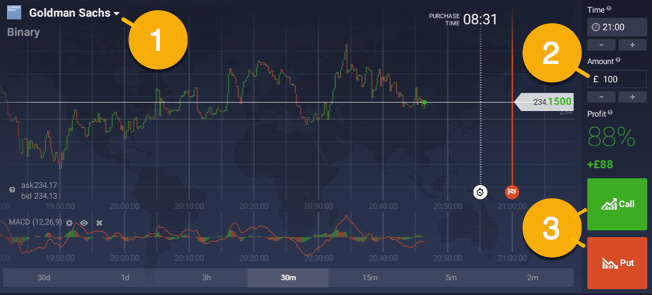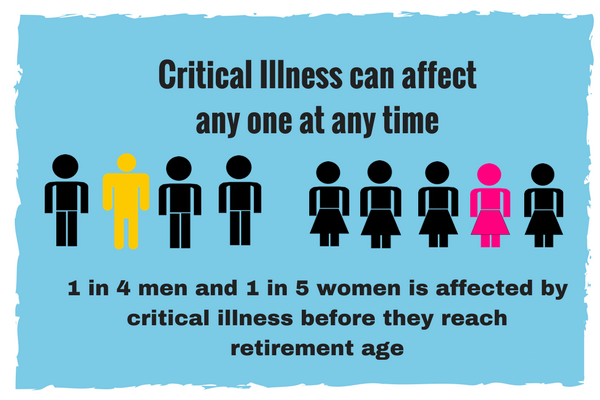How To Calculate Bad Debt Expense Correctly?
Contents:


It allows you to balance the liabilities bad debts represent on your balance sheet. The percentage of sales of estimating bad debts involves determining the percentage of total credit sales that is uncollectible. The past experience with the customer and the anticipated credit policy plays a role in determining the percentage. You need to set aside an allowance for bad debts account to have a credit balance of $2500 (5% of $50,000). This calculator will compute a company’s bad debt to accounts receivable ratio, given the total value of the company’s bad debts and its accounts receivable balance.
The result of your calculation in the percentage of sales method is your adjustment to the AFDA balance. It refers to the communication gap that arises between AR departments and their customers due to a lack of connected systems. Businesses that rely on manual credit checks find it challenging to maintain real-time visibility in the credit health of clients. It leads to overlooked information which culminates in unrealistic credit limits for their clients.
What Are Uncollectible Accounts?
Bad debt provisioning also enables lenders to accurately report their financial performance and comply with accounting standards. There are two main methods companies can use to calculate their bad debts. The first method is known as the direct write-off method, which uses the actual uncollectable amount of debt. Using this number, dividing by the accounts receivable for the period can show the exact percentage of bad debt. If most of your customers fulfill their credit payments, and you don’t have many bad debts, you may decide to write them off individually. It may be time to write off bad debts after an invoice has long surpassed its deadline and you’ve taken several steps to try to collect the outstanding balance.
They come up as operational costs on your income statement, which means you won’t pay any taxes on net income you never earned. With optimized billing and invoices processes, bad debt happens very rarely. If you have accumulated bad debts, it might be time to review your receivable process.
How To Calculate Bad Debt Expense Correctly?
The statement of retained earnings had the existing credit balance of $6,300 as the previous allowance for doubtful accounts. If your business was already discontinued before the start of the accounting year, you would not be eligible to claim bad debt as a deduction from the company’s profit. According to Section 36 of the IT act, if a bad debt is already written off, it is not allowed to be a deduction on the grounds that there are still possibilities for recovery. Companies may base their need for a reserve for bad debts on estimations from previous years’ bad debt percentages or economic factors affecting their business. It can also be thought of as a risk assessment tool that gives finance teams a better idea of how future clients may perform with respect to paying their debts.
How To Get A $15000 Personal Loan – Forbes Advisor – Forbes
How To Get A $15000 Personal Loan – Forbes Advisor.
Posted: Wed, 08 Mar 2023 08:00:00 GMT [source]
The amount of the https://1investing.in/ debt is offset by a credit memo for the unpaid account, debiting the bad debt expense account and crediting the accounts receivable account. You must record bad debt expenses only if you follow the accrual accounting system. If you follow the cash-based method of accounting, you’ll only record revenue once the payment physically arrives in your company’s bank account. If a sale on credit turns out to be uncollectible, in the cash method there isn’t a need to cancel out the receivable with the bad debt expense.
How to directly write off your accounts receivable
If the balance in the allowance account had been $2,000 before the entry, only $4,250 would have been needed for the adjusting entry. The accounts receivable aging method offers an advantage because it gives AR teams a more exact basis for estimating their uncollectibles. The final collection probability is however still an average and individual outstanding accounts could skew calculations. For instance, Customer A might routinely clear 100% of bills within days, but Customer B might have a tendency to default. There are two ways to record bad debt expenses in your accounting statements. In other words, it tells you what percentage of sales profit a company loses to unpaid invoices.
Additionally, keeping a low ratio will improve your business’s credit score and enable you to maintain a healthy cash flow. It is a more advanced accounting method for keeping track of bad debt. An allowance for doubtful accounts is always maintained in a contra asset account. The amount of this allowance will depend on the company and its past records. Because you set it up ahead of time, your allowance for bad debts will always be an estimate.
A bad debt expense is made to reverse the revenue that had been recorded during the sale of the product. Bad debt is a liability, as it represents money owed by customers who are unlikely to pay. Thus, it is crucial for you to accurately time your company’s bad debts. Further, recording such instances will help you avoid similar situations in the future. When these predictions or estimations indeed become a bad debt, another journal entry is passed, which debits allowance for doubtful accounts and credits the receivable account. Percentage of sales method simply considers a period’s total sales and multiplies the value by a percentage.
- If your business was already discontinued before the start of the accounting year, you would not be eligible to claim bad debt as a deduction from the company’s profit.
- The basic method for calculating the percentage of bad debt is quite simple.
- Your business is stable, having not experienced massive growths or declines.
- This is an easy method for bad debt calculation, but it is not very accurate.
Accounts receivable is a permanent asset account while sales is a revenue account that resets every year. As a result, the steps you’ll take to estimate your AFDA in this method are different compared to the percentage of sales method. Bad debt expense is an accounting entry that lists the dollar amount of receivables your company does not expect to collect. Bad debt ratio measures the amount of money a company has to write off as a bad debt expense compared to its net sales. With B2B businesses relying on the credit model to bring in more clients and sales volume, bad debt has become an inevitable part of operations. “In Europe and North America, non-collectible written-off revenues had risen to 2% before the pandemic,” says a McKinsey article.
Allowance for doubtful accounts on the balance sheet
Any receivable write-offs during the period result in a decrease to the reserve balance. Either net sales or credit sales method is acceptable in the calculation of bad debt expense. However, if the credit sales fluctuate a lot from one period to another, using the net sales method to calculate bad debt expense may not be as accurate as using credit sales. If the allowance for bad debts account had a $300 credit balance instead of a $200 debit balance, a $4,700 adjusting entry would be needed to give the account a credit balance of $5,000. You need to create a provision for bad debt by debiting the bad debt expense account and crediting the accounts receivable. However, if customers delay or miss out on said payments, this payment is recorded as an expense in the company’s income statement.

If 6.67% sounds like a reasonable estimate for future uncollectible accounts, you would then create an allowance for bad debts equal to 6.67% of this year’s projected credit sales. A provision is an accounting term for a company’s estimate of the money that will not be collected on receivables. A provision is created when there are doubts about the company’s ability to collect on receivables or when the company anticipates that it will not collect on receivables in future periods. This estimate is based on past data and observations and any anticipated events. Let’s say your business brought in $60,000 worth of sales during the accounting period. Based on historical trends, you predict that 2% of your sales from the period will be bad debts ($60,000 X 0.02).

This ratio measures the amount of money a company has to write off as a bad debt expense compared to its net sales. Whether bad debt expense is an operating expense is a contentious issue, and whether such a debt expense is an operating expense is a question that requires extensive consideration. To prevent bad debt from happening in the first place, you need to be proactive in your accounts receivable process. You can do so by optimizing your payment processes, sending payment reminders, and using automation. That’s why payment reminders are key in your account receivable process and especially in recognizing bad debts.

If a significant amount of that money becomes bad debt, it can create cash flow problems and even lead to bankruptcy. In addition to the financial impact, bad debt can also affect a company’s reputation. Many small businessesaren’t sure if they should classify bad debt expense as an operating expense or an interest expense . However, it’s crucial to classify these expenses correctly to ensure that they are accounted for in the appropriate balance sheet account. Working with an external accountant or CPA is a solid way to ensure that you stay on track and get the most up-to-date guidance on your business’ in-house accounting questions. You can sum up the manual write-offs you did during an accounting period, or use projected models like the bad debt rate and the aging method.
You only have to record bad debt expenses if you use accrual accounting principles. Bad debts are still bad if you use cash accounting principles, but because you never recorded the bad debt as revenue in the first place, there’s no income to “reverse” using a bad debt expense transaction. They argue that it is a mistake to classify this expense as a non-operating one because it is recorded on the cash flow statement and affects its cash position. Another argument favoring classifying bad debt as a non-operating expense is that bad debt comes from lending money to their customers, and they are unlikely to get it back. Under this approach, businesses find the estimated value of bad debts by calculating bad debts as a percentage of the accounts receivable balance.
You can use the percentage sales or receivables ageing method to estimate bad debts for the year. During the journal entry, the bad debt expense account is debited, and allowance for doubtful accounts is credited. The direct write off method uses actual amounts of uncollected debt from accounts receivable and is the only method accepted by the IRS for reporting taxable income.


